Dalmatian Dog Bed
Orthopedic Dog Beds are Comfortable!
Introduction
The Dalmatian dog bed takes into account their health conditions, sleeping style, and preferences. Because of health issues, orthopedic beds are best.
Dalmatians, with their iconic spotted coats and energetic personalities, have long captivated dog lovers around the world. Known for their historical role as carriage dogs and later as the beloved mascots of firehouses, this breed is as versatile as it is visually striking.
Originating from the Dalmatia region, now part of Croatia, Dalmatians have evolved into a breed known for their athleticism, intelligence, and loyal nature. While their striking appearance makes them stand out, their temperament, exercise needs, and unique health considerations also define them.
Dalmatians require dedicated owners who can keep up with their boundless energy, provide consistent training, and manage their specific dietary needs. They are highly trainable but can be independent and stubborn at times, making early and consistent obedience training essential.
These dogs thrive in active households where they can be part of the family and involved in daily activities. Whether you’re drawn to their intelligence, athleticism, or simply their charm, Dalmatians are a rewarding breed for owners who understand their unique traits and needs.
In this guide, we share topics for new dog owners that include best dog bed types, best brands, facts, fun facts, health conditions, behavior concerns, tips for new owners, costs of ownership, and safe foods and foods to avoid.
Best Dog Bed Types
For Dalmatians, it’s important to consider their energy levels, short coats, and joint health when selecting a dog bed. Here’s a list of dog bed types that are well-suited for Dalmatians:
-
Orthopedic Dog Beds
- Best for: Senior Dalmatians or dogs with joint issues.
- Features: Made with memory foam to provide extra support for joints and muscles, which is important since Dalmatians can be prone to hip dysplasia.
- Benefits: Helps relieve pressure on joints, ensuring a comfortable rest. Provides even weight distribution, reducing pressure points. Promotes better sleep and joint relief. Helps in managing or preventing joint issues, a common concern for large and active breeds.
- Material: Typically made from memory foam or medical-grade foam. When buying beds made with memory foam be sure to look for the CertiPUR-US seal. The seal means that the materials used do not contain any toxins or chemicals that are harmful to humans and pets.
- Support: These beds are specifically designed to support joints and muscles, which is important for larger, active breeds like Dalmatians that may experience joint stress or conditions like hip dysplasia as they age.
- Durability: High-quality orthopedic beds are durable and retain their shape even after prolonged use.
- Best For: Senior Dalmatians, dogs with arthritis, or those recovering from surgery.
2. Bolster Beds
- Best for: Dogs that like to lean or rest their head on something while sleeping.
- Features: These beds have raised sides (bolsters) that provide a supportive structure for resting.
- Benefits: Offers a sense of security and a place to lean their head, helping with relaxation. Helps dogs who like to rest against something when they sleep. Ideal for dogs who feel safer with a supportive “wall” around them. Can provide psychological comfort, making it easier for your Dalmatian to relax.
- Material: Usually filled with high-loft polyester or foam and often lined with soft fabrics like fleece or microfiber.
- Support: The raised sides give your Dalmatian a place to rest their head, which can mimic the support of a pillow.
- Security: Many dogs find comfort in a more enclosed space, and the bolsters provide that feeling of security.
3. Cooling Dog Beds
- Best for: Dalmatians, as they can be sensitive to heat due to their short coats.
- Features: Made from materials that help dissipate heat or include gel inserts for cooling.
- Benefits: Keeps the dog cool, especially in warm weather or after physical activity. Keeps your Dalmatian comfortable in warmer weather. Reduces the risk of overheating, especially after intense activity. Ideal for homes in hot climates or during the summer months.
- Material: Typically made with cooling gel foam or breathable mesh fabrics.
- Cooling Effect: These beds dissipate heat and regulate temperature, making them ideal for Dalmatians who tend to overheat due to their short coats.
- Indoor/Outdoor: Some cooling beds are suitable for both indoor and outdoor use, offering versatility.
4. Elevated or Cot-Style Beds
- Best for: Active Dalmatians that spend a lot of time outdoors or in warmer climates.
- Features: Raised beds that allow airflow underneath, helping to keep them cool.
- Benefits: Provides a breathable surface and keeps dogs off hard or cold floors. Lightweight and portable, making it easy to move from indoors to outdoors. Provides a cooling effect through airflow, great for active dogs like Dalmatians. Easy to clean and maintain.
- Material: Typically made with a steel or aluminum frame and a mesh fabric for the bed surface.
- Breathability: The raised design promotes airflow, keeping your dog cool and comfortable.
- Outdoor Use: Great for outdoor settings, as they keep dogs off the ground, away from dirt, insects, and cold or hot surfaces.
5. Donut or Cuddler Beds
- Best for: Dalmatians that enjoy curling up to sleep.
- Features: Round beds with a plush outer edge for burrowing or cuddling into.
- Benefits: Offers warmth and comfort, especially for dogs that like to feel snug while sleeping. Provides a sense of security and warmth, which can help anxious or nervous dogs feel more comfortable. Ideal for Dalmatians that enjoy curling up into a ball when they sleep. Soft and plush, offering a luxurious sleeping experience.
- Material: Made with plush fabrics like faux fur or fleece, and stuffed with a soft, cushiony filling.
- Comfort: The raised edge allows you’re Dalmatian to curl up, making them feel cozy and protected.
- Security: The design of this bed mimics the feeling of being in a den, which can reduce anxiety and provide comfort.
6. Waterproof Dog Beds
- Best for: Dalmatians that are active outdoors or prone to accidents.
- Features: Beds with water-resistant or waterproof covers.
- Benefits: Easy to clean and maintain, ideal for dogs that may get wet or dirty frequently. Protects against accidents, spills, and wet conditions. Easier to clean, which is perfect for active Dalmatians that get dirty after outdoor activities. Maintains cleanliness and hygiene over time.
- Material: Usually made with water-resistant fabrics like nylon or polyester and a waterproof lining.
- Ease of Cleaning: These beds are easy to wipe down or wash, making them ideal for Dalmatians that spend a lot of time outdoors or in wet conditions.
- Durability: Waterproof beds are generally more durable and can withstand wear and tear from active dogs.
7. Washable Beds
- Best for: Owners who want easy maintenance.
- Features: Beds with removable, washable covers.
- Benefits: Helps keep the bed fresh and clean, which is useful for dogs that shed or get dirty often. Perfect for dogs that shed a lot or get dirty frequently. Helps in maintaining a clean and hygienic living space for your dog. Easy to clean after any accidents, ensuring a fresh bed at all times.
- Material: Made with easily removable, machine-washable covers.
- Hygiene: Regular washing helps eliminate odors, dirt, and allergens that may accumulate over time.
- Maintenance: These beds offer long-term use since you can easily refresh them with a wash.
Additional Considerations for Dalmatians:
- Size: Ensure the bed is large enough for your Dalmatian to stretch out comfortably.
- Material: Opt for durable, chew-resistant materials if your dog tends to chew or scratch.
- Firmness: Dalmatians are active dogs, so a bed with medium firmness is ideal, balancing comfort and support.
Best Dog Bed Brands
Here are some recommended brands that offer high-quality dog beds suited for Dalmatians, organized by the bed types:
- Orthopedic Dog Beds
- Brands:
- Big Barker: Known for their orthopedic beds, designed specifically for large breeds with joint issues. These beds provide excellent support and come with a 10-year warranty.
- PetFusion Ultimate Pet Bed: Offers memory foam and a waterproof liner. The foam base provides strong orthopedic support, and it’s great for aging dogs.
- Bolster Beds
- Brands:
- Friends Forever Orthopedic Dog Bed Lounge Sofa: A great bolster bed with memory foam and raised edges for comfort.
- BarksBar Snuggly Sleeper: This one has a soft cotton-padded rim that makes it perfect for dogs that love to rest their head while lounging.
- Cooling Dog Beds
- Brands:
- Coolaroo Elevated Pet Bed: An affordable elevated bed with a breathable fabric that keeps dogs cool. Perfect for outdoor use.
- K&H Pet Products Cooling Bed: This gel-infused bed is designed to keep dogs cool, with a pressure-activated cooling surface.
- Elevated or Cot-Style Beds
- Brands:
- K&H Pet Products Original Elevated Pet Cot: This is a durable and easy-to-clean option, offering great ventilation for warm climates.
- Frisco Steel-Framed Elevated Dog Bed: Known for being sturdy and resistant to wear and tear, great for both indoor and outdoor use.
- Donut or Cuddler Beds
- Brands:
- Best Friends by Sheri Calming Donut Bed: A popular cuddler bed that’s soft and cozy, ideal for dogs that love to curl up and feel snug.
- Majestic Pet Poly-Cotton Sherpa Bagel Dog Bed: Offers a soft plush material and raised sides, giving dogs a sense of security while resting.
- Waterproof Dog Beds
- Brands:
- Brindle Waterproof Designer Memory Foam Pet Bed: This bed has a waterproof cover and offers memory foam for joint support.
- FurHaven Waterproof Deluxe Orthopedic Dog Bed: Offers a waterproof liner and a plush cover that’s comfortable and easy to clean.
- Washable Beds
- Brands:
- MidWest Homes for Pets Deluxe Pet Bed: This plush bed is machine washable and great for daily use, offering simple maintenance.
- FurHaven Plush & Suede Orthopedic Sofa: With a removable, machine-washable cover, this bed is ideal for easy cleaning and maintenance.
Facts and Fun Facts about Dalmatian’s
Measurements:
- Size: Medium – Large
- Group: Non-Sporting Group
- Height: 19 – 24 inches
- Weight Male: 45 – 70 lbs.
- Weight Female: 45 – 60 lbs.
- Length Male: 32 – 33 inches
- Length Female: 31 – 32 inches
- Fully Grown: 12 – 16 months
- Lifespan: 11 – 13 years
- Colors: White & Black, White & Liver Brown
- Popularity: This breed is the 47th most popular in the United States according to the American Kennel Club in 2023.
- Intelligence: This breed is ranked as the 39th most intelligent according to Professor Stanley Coren at the University of British Columbia.
Facts & Fun Facts about Dalmatian’s
Here’s a list of facts and fun facts about Dalmatians that as a new owner or anyone curious about this iconic breed can know about:
General Facts About Dalmatians:
- Origin and History:
- Origin: Dalmatians are believed to have originated in Dalmatia (now part of Croatia), though their exact origins are debated.
- Historical Roles: They were used as carriage dogs, guarding horses and carriages, and were also used as war dogs, firehouse mascots, and even circus performers.
- Distinctive Coat:
- Spots: Dalmatians are famous for their black or liver-colored spots on a white coat. Interestingly, puppies are born completely white and develop their spots over the first few weeks.
- Coat Type: They have a short, dense coat that sheds year-round.
- Temperament:
- Personality: Dalmatians are known for being energetic, intelligent, and loyal. They are also protective and can make excellent watchdogs.
- Social: They are generally friendly but can be reserved or aloof around strangers.
- Health:
- Common Issues: Dalmatians are prone to deafness, with about 10-12% being born deaf. They also have a higher risk of urinary stones due to their unique metabolism.
- Hearing: Puppies should undergo BAER (Brainstem Auditory Evoked Response) testing to check for hearing ability.
- Exercise Needs:
- Activity Level: Dalmatians are very active and require daily exercise to stay healthy and happy. Without enough activity, they may develop behavioral issues.
- Intelligence:
- Trainability: They are intelligent and learn quickly, but they can also be strong-willed and independent, which can make training a challenge if not handled consistently.
- They Have Served Many Different Purposes
- In times of war, Dalmatians served as sentinels at the borders of Dalmatia and Croatia. They have also been herding, ratting, and hunting dogs.
- Fire Departments Used Them as Coach Dogs
- Dalmatians are famous for being firehouse dogs. This is because Dalmatians used to serve as coaching dogs for horse-drawn fire coaches. With the invention of fire trucks, the Dalmatians weren’t really needed anymore. But many firehouses still keep Dalmatians as mascots.
- Dalmatian Puppies Have No Spots at Birth
- If you’ve seen the animated film “101 Dalmatians,” you may remember that Pongo and Perdita’s 15 puppies are all white when they’re born. Like real Dalmatians, these fictional puppies only get their spots as they grow older.
Fun Facts About Dalmatians:
- Firehouse Mascots:
- Fun Fact: Dalmatians became the traditional mascot of firehouses in the 18th century. In the days of horse-drawn fire engines, Dalmatians were used to clear the way for fire carriages and guard the horses while the firefighters were at work.
- Disney Fame:
- Fun Fact: Dalmatians gained global fame thanks to the Disney movie “101 Dalmatians” (and its animated and live-action versions), where they became a symbol of fun and adventure.
- Born Without Spots:
- Fun Fact: Dalmatian puppies are born pure white and start developing their spots after a couple of weeks. Their unique pattern continues to emerge and change slightly as they grow.
- Circus Stars:
- Fun Fact: Dalmatians were often featured in circuses thanks to their intelligence, agility, and striking appearance. Their ability to perform tricks made them crowd favorites.
- Highly Active and Fast Runners:
- Fun Fact: Dalmatians are natural runners with great endurance. They were bred to run alongside carriages for long distances, and they can still be great running companions today.
- First “Guardians of the Horses”:
- Fun Fact: Before becoming firehouse dogs, Dalmatians were used to guard horse-drawn carriages. They would run alongside the horses, keeping them calm and protecting them from threats, including thieves.
- Deafness is Common:
- Fun Fact: Due to a genetic quirk, Dalmatians are more likely to be born deaf than most other dog breeds. Around 10-12% are completely deaf in both ears, and up to 30% may be deaf in one ear.
- Long History of Royal Connections:
- Fun Fact: Dalmatians have been associated with royalty and aristocracy for centuries. They were often kept as status symbols, particularly by European nobility.
- Smiling Dalmatians:
- Fun Fact: Some Dalmatians are known to smile by baring their teeth in what looks like a grin. This behavior is often seen when they are happy or excited, and it can be a unique and endearing trait.
- Aviation Dalmatians:
- Fun Fact: Dalmatians were once the mascot of an early aviation company, Pan American World Airways, due to their role in clearing the runway (in a symbolic way, much like they cleared the roads for carriages).
- Spotted Everywhere:
- Fun Fact: Dalmatians aren’t just black and white; some have liver-colored spots, and even rarer, they can have lemon or blue-gray spots.
- They Make a Lot of “Zoomies”:
- Fun Fact: Dalmatians are known for doing zoomies—running wildly in circles at top speed when they’re excited or happy. This behavior is a favorite among Dalmatian owners.
Video: Pros & Cons of A Dalmatian
An excellent video sharing the pros and cons of owning a Dalmatian. View this video before committing to getting one.
Common Health Issues
Dalmatians are a unique breed with distinctive spots and a lively temperament, but they are also predisposed to several specific health conditions. Here’s a list of the most common health concerns for Dalmatians:
- Deafness
- Prevalence: About 30% of Dalmatians are born with some degree of hearing loss, with 8-12% being completely deaf in both ears.
- Cause: Linked to the genes responsible for their coat color and spots.
- Screening: BAER (Brainstem Auditory Evoked Response) tests are often used to detect deafness in puppies.
- Urolithiasis (Urinary Stones)
- Prevalence: Dalmatians are genetically prone to developing urinary stones, especially urate stones.
- Cause: A metabolic defect in purine metabolism, which leads to excessive uric acid production.
- Management: Diet plays a crucial role in preventing stone formation. A low-purine diet and plenty of hydration are recommended.
- Skin Allergies (Atopic Dermatitis)
- Prevalence: Dalmatians are susceptible to various skin allergies, including food allergies and environmental allergens.
- Symptoms: Itching, redness, and frequent ear infections.
- Management: Identification of the allergen and providing relief through medications, diet adjustments, or other treatments.
- Hip Dysplasia
- Prevalence: While less common than in larger breeds, Dalmatians can still suffer from hip dysplasia.
- Cause: A genetic condition where the hip joint doesn’t develop properly, leading to arthritis and mobility issues.
- Management: Weight control, exercise moderation, and sometimes surgery.
- Hyperuricemia (High Uric Acid Levels)
- Prevalence: This is directly related to the predisposition for urinary stones.
- Management: Close monitoring of diet, plenty of water, and medications to control uric acid levels may be needed.
- Iris Sphincter Dysplasia
- Prevalence: A congenital eye condition that affects the muscles of the iris.
- Symptoms: Sensitivity to light and potential vision problems.
- Management: No cure, but protective measures like avoiding bright lights can help.
- Obesity
- Prevalence: Like many breeds, Dalmatians can become overweight if their diet and exercise are not properly managed.
- Management: Regular exercise and a balanced diet are essential to keep a Dalmatian at a healthy weight.
- Treats: To help manage weight gain, be sure that treats used do not exceed more than 10% of their daily calories.
By being aware of these conditions, regular vet check-ups, proper diet, exercise, and early interventions, Dalmatians can lead healthy and happy lives.
Behavior Concerns
Dalmatians are known for their unique personality traits and energetic nature. Here are some behaviors that new Dalmatian owners should be aware of:
- High Energy and Need for Exercise
- Behavior: Dalmatians are extremely active and energetic dogs. They were historically used as carriage dogs, which means they have incredible stamina.
- What to Expect: Without proper exercise, Dalmatians can become bored and may develop destructive behaviors.
- Recommendation: They need regular, vigorous exercise like long walks, runs, or even activities like agility training. A fenced yard is ideal for burning off energy.
- Strong-Willed and Independent
- Behavior: Dalmatians can be quite independent and sometimes stubborn.
- What to Expect: Training a Dalmatian can be a challenge, especially if they sense any inconsistency or leniency.
- Recommendation: Consistent, firm, and positive reinforcement training is key. Start training early and make sessions engaging to hold their attention.
- Sociable but Sometimes Aloof
- Behavior: Dalmatians are generally friendly and sociable dogs, but they can sometimes appear aloof or reserved around strangers.
- What to Expect: They typically bond strongly with their family but may take time to warm up to new people.
- Recommendation: Early socialization with different people, animals, and environments will help them become well-adjusted adults.
- Strong Protective Instincts
- Behavior: Dalmatians are known to be protective of their family and home.
- What to Expect: They can be good watchdogs and may alert you to the presence of strangers.
- Recommendation: Early training on appropriate behavior around guests and in different settings can help balance their protective nature.
- Affectionate and Loyal
- Behavior: Dalmatians are very loyal and affectionate toward their family.
- What to Expect: They often seek out attention and enjoy spending time with their humans.
- Recommendation: Be prepared for a close bond and lots of time together. They don’t do well when left alone for long periods, as they can suffer from separation anxiety.
- Can Be Prone to Hyperactivity or Nervousness
- Behavior: Dalmatians can sometimes become overly excitable or anxious, especially in new situations or if they aren’t properly stimulated.
- What to Expect: Hyperactivity can manifest as zoomies, barking, or general restlessness.
- Recommendation: Consistent exercise, mental stimulation through puzzles or toys, and a calm household routine can help ease their anxiety.
- Tendency to “Shadow” Their Owners
- Behavior: Dalmatians love to follow their humans everywhere and want to be involved in whatever you’re doing.
- What to Expect: They can become very attached and may follow you from room to room.
- Recommendation: While this can be endearing, it’s important to teach them some independence and to manage separation anxiety early on.
- Strong Prey Drive
- Behavior: Dalmatians may have a high prey drive, meaning they might chase after small animals like squirrels or cats.
- What to Expect: This can lead to a lot of chasing during walks if they aren’t properly trained.
- Recommendation: Keep them on a leash in unsecured areas and work on recall training to improve their response to commands.
- Shedding and Grooming Habits
- Behavior: Despite their short coat, Dalmatians shed quite a bit, and their white hairs can be especially noticeable.
- What to Expect: Shedding happens year-round, so regular brushing is necessary to keep it under control.
- Recommendation: Invest in a good grooming brush and be prepared for regular cleaning around the house.
- Playful and Good with Families
- Behavior: Dalmatians are generally great with children and enjoy playing.
- What to Expect: They can be rambunctious, so supervise playtime with smaller children to avoid accidental bumps or knocks.
- Recommendation: Early training on being gentle, especially around young children, will help.
With proper training, socialization, and enough physical and mental stimulation, Dalmatians make wonderful companions and loyal family pets.
New Owner Tips
Here are some helpful tips that you can share with new Dalmatian owners to ensure they are well-prepared for life with this energetic and unique breed:
- Commit to Regular Exercise
- Tip: Dalmatians are high-energy dogs that need at least 1-2 hours of exercise daily. Encourage activities like running, long walks, or games like fetch to keep them mentally and physically stimulated.
- Why: This will prevent boredom, which can lead to destructive behavior like chewing or digging.
- Start Training Early
- Tip: Begin obedience training and socialization from puppyhood. Dalmatians can be independent and stubborn, so consistent, positive reinforcement-based training is key.
- Why: A well-trained Dalmatian is a joy to live with, while an untrained one can become difficult to handle due to their strong will and intelligence.
- Be Mindful of Diet
- Tip: Feed your Dalmatian a balanced, low-purine diet to help reduce the risk of urinary stones (urate stones), a common health issue in the breed. Avoid foods high in purines such as organ meats, certain fish, and high-protein snacks.
- Why: Their unique metabolism requires careful dietary management to prevent stone formation.
- Use Positive Reinforcement
- Tip: Dalmatians respond best to positive reinforcement, such as treats, praise, and play. Avoid harsh discipline, as they can become stubborn or stressed if treated too harshly.
- Why: This builds trust, makes training more effective, and strengthens your bond with your Dalmatian.
- Regular Grooming to Manage Shedding
- Tip: Brush your Dalmatian regularly to manage shedding, which can be quite heavy despite their short coat. A rubber curry brush or deshedding tool works well.
- Why: Frequent brushing helps control the amount of fur in your home and keeps their coat healthy and shiny.
- Be Prepared for Deafness
- Tip: Since Dalmatians have a higher-than-average rate of deafness, make sure to have your puppy’s hearing tested early with a BAER test. If they are deaf or partially deaf, focus on hand signals and visual cues during training.
- Why: Knowing their hearing status will help you tailor training and communication methods to suit their needs.
- Provide Mental Stimulation
- Tip: Dalmatians are intelligent and need mental challenges to prevent boredom. Puzzle toys, training games, and teaching new tricks are great ways to engage their minds.
- Why: Mental stimulation helps prevent behavioral problems and keeps your Dalmatian happy and content.
- Socialize Early and Often
- Tip: Expose your Dalmatian to a variety of people, places, sounds, and other animals starting from a young age. This will help them grow into a well-rounded, confident adult.
- Why: Proper socialization reduces the likelihood of fearfulness or aggression in unfamiliar situations.
- Monitor for Skin Allergies
- Tip: Dalmatians can be prone to skin allergies, so keep an eye out for itching, redness, or frequent ear infections. Consult your vet if you notice these symptoms.
- Why: Early detection and management of allergies can prevent discomfort and more serious skin problems.
- Make Time for Bonding
- Tip: Dalmatians are loyal and affectionate dogs that thrive on spending time with their family. Engage in playtime, training, and cuddle sessions to strengthen your bond.
- Why: Dalmatians don’t do well when left alone for long periods and can develop separation anxiety. Regular interaction helps them feel secure and loved.
- Create a Safe and Secure Environment
- Tip: If you have a yard, make sure it’s securely fenced. Dalmatians are curious and may try to roam or chase after small animals.
- Why: A secure environment ensures their safety, especially with their high energy levels and prey drive.
- Be Prepared for a Loyal Companion
- Tip: Dalmatians often follow their owners around the house and want to be involved in everything you do. Embrace this and enjoy their companionship.
- Why: Their loyalty and affection are key parts of their personality, and spending time together will lead to a happy, well-adjusted dog.
By following these tips, new Dalmatian owners can create a loving, well-managed environment for their dog, setting them up for success in both behavior and health!
Costs of Ownership
Owning a Dalmatian, like any dog, involves both upfront and ongoing costs. Here’s a breakdown of the average expenses associated with owning a Dalmatian:
- Initial Costs
These are one-time costs you will incur when first getting your Dalmatian.
- Purchase Price or Adoption Fee:
- From a Breeder: $800 – $2,500 (depending on bloodline, location, and breeder reputation).
- From a Shelter/Rescue: $50 – $300 (adoption fees typically cover initial vet costs like vaccinations and spaying/neutering).
- Spaying/Neutering: $200 – $500
- Why: Most breeders or rescues will require this unless you plan on breeding, and it helps with behavioral and health issues.
- Initial Vet Visit: $100 – $300
- Includes: Full health check-up, vaccinations, and any necessary treatments for common puppy issues.
- Microchipping: $25 – $50
- Why: A one-time cost to help ensure your Dalmatian can be identified if lost.
- Supplies (initial setup):
- Crate: $50 – $150
- Bedding: $30 – $100
- Food and Water Bowls: $15 – $50
- Leash, Collar, and ID Tag: $20 – $50
- Toys: $20 – $100 (depending on type and quantity)
- Grooming Supplies (brushes, nail clippers, etc.): $30 – $60
- Ongoing Costs
These are the recurring costs associated with daily care and maintenance.
- Food: $30 – $60 per month
- Why: Dalmatians need high-quality food, especially low-purine diets to manage their risk of urinary stones. Prices vary depending on the brand and whether you go with dry, wet, or a raw diet.
- Routine Veterinary Care: $300 – $600 per year
- Includes: Annual exams, vaccinations, heartworm testing, flea and tick prevention, and dental check-ups.
- Pet Insurance: $20 – $60 per month
- Why: Insurance helps cover unexpected medical costs, particularly important for Dalmatians due to potential health issues like urinary stones and allergies. Prices vary depending on coverage.
- Grooming: $100 – $300 per year
- Why: Dalmatians shed year-round and need regular brushing, but they don’t require professional grooming often. You might opt to have their nails trimmed or teeth cleaned professionally.
- Training Classes: $100 – $300 (for basic obedience)
- Why: Especially for first-time owners, professional training can be a great help in managing a Dalmatian’s energy and intelligence.
- Toys and Enrichment: $100 – $300 per year
- Why: Dalmatians are active and intelligent, so they need toys and mental stimulation to prevent boredom. Some toys wear out quickly due to their energy levels.
- Pet Sitting/Boarding: $25 – $50 per day
- Why: If you travel frequently or need someone to care for your dog while you’re away, this can add up.
- Additional Potential Costs
These are not regular costs but should be budgeted for in case they arise.
- Emergency Vet Care: $500 – $5,000+
- Why: Dalmatians may experience emergencies like urinary blockages, injuries, or other sudden health issues that require immediate care.
- Medications (for allergies or other conditions): $100 – $500 per year
- Why: If your Dalmatian develops allergies, skin conditions, or needs special medications for things like urinary health, this will add to costs.
- Deafness or Special Training: $100 – $500
- Why: If your Dalmatian is deaf or partially deaf, you may want to invest in specialized training for hand signals and communication.
Estimated Annual Cost:
- Low end: $1,200 – $2,500
- High end: $3,000 – $5,000+
Lifetime Costs: Given that Dalmatians live around 11-14 years, the lifetime cost of owning a Dalmatian can range from $15,000 to $40,000, depending on your location, lifestyle, and any potential health issues. By budgeting for both the initial and ongoing costs, new Dalmatian owners can provide the best care for their pets without unexpected financial strain.
Safe Foods and Foods to Avoid
Here’s a list of safe foods for Dalmatians and foods to avoid, keeping in mind their unique dietary needs, especially their predisposition to urinary stones (urate stones) due to high uric acid levels.
Safe Foods for Dalmatians:
- Lean Meats (Low-Purine)
- Examples: Chicken (without skin), turkey, beef, lamb.
- Why: Lean meats provide essential protein without the high purine levels found in organ meats, helping reduce the risk of urinary stones.
- Fish (Low-Purine Types)
- Examples: Salmon, whitefish, herring.
- Why: Rich in omega-3 fatty acids, these fish help support healthy skin and coat.
- Eggs
- Why: Eggs are a great source of high-quality protein and low in purines, making them a safe choice for Dalmatians.
- Dairy (in moderation)
- Examples: Plain yogurt, cottage cheese, cheese.
- Why: Dairy products can be a good source of calcium and protein, but they should be given in moderation, as some dogs are lactose intolerant.
- Vegetables
- Examples: Carrots, green beans, sweet potatoes, broccoli, spinach.
- Why: Low-calorie, nutrient-rich veggies provide fiber, vitamins, and minerals without adding purines. Avoid overfeeding spinach, as it can contribute to oxalate stones.
- Fruits (in moderation)
- Examples: Apples (no seeds), blueberries, watermelon, bananas, pumpkin.
- Why: Fruits offer a natural source of vitamins and antioxidants. Avoid giving too much fruit due to its sugar content.
- Rice, Pasta, and Potatoes
- Why: These are great sources of carbohydrates and are low-purine, making them safe for Dalmatians prone to urinary stones.
- Peanut Butter (unsalted, unsweetened)
- Why: A tasty treat that provides healthy fats and protein. Avoid varieties with added sugar or xylitol (a toxic sweetener for dogs).
- Oatmeal
- Why: A good source of fiber, especially helpful for dogs with digestive issues.
- Canned Pumpkin (unsweetened)
- Why: Great for digestive health, it can help with both diarrhea and constipation.
Foods to Avoid for Dalmatians:
- Organ Meats (High in Purines)
- Examples: Liver, kidneys, brains, heart.
- Why: High purine levels increase uric acid, contributing to urinary stone formation.
- Certain Fish (High in Purines)
- Examples: Sardines, mackerel, anchovies.
- Why: These types of fish have high purine content and can increase the risk of urinary stones.
- High-Purine Vegetables
- Examples: Asparagus, mushrooms, peas, spinach (in large amounts).
- Why: While not as risky as organ meats, these vegetables can still contribute to uric acid buildup.
- Grapes and Raisins
- Why: Toxic to dogs and can cause kidney failure, even in small amounts.
- Chocolate
- Why: Contains theobromine and caffeine, both of which are toxic to dogs and can lead to serious health issues like seizures or death.
- Onions, Garlic, and Chives
- Why: These can cause anemia by damaging red blood cells in dogs.
- Artificial Sweeteners (Xylitol)
- Why: Found in sugar-free gum, candy, and some peanut butters, xylitol is highly toxic to dogs and can cause hypoglycemia, seizures, and liver failure.
- Alcohol
- Why: Extremely toxic to dogs, even in small amounts. It can lead to vomiting, diarrhea, and even death.
- Avocado
- Why: Contains persin, which is toxic to dogs in large amounts. The pit can also pose a choking hazard.
- Macadamia Nuts
- Why: Toxic to dogs and can cause weakness, vomiting, tremors, and hyperthermia.
- Caffeine (Coffee, Tea)
- Why: Stimulants like caffeine are toxic to dogs and can cause symptoms ranging from restlessness and rapid breathing to muscle tremors and heart palpitations.
- Raw Dough (with yeast)
- Why: Can expand in the dog’s stomach and produce alcohol, which is toxic.
- Salty Snacks
- Examples: Chips, pretzels, salted nuts.
- Why: High salt intake can lead to sodium ion poisoning and dehydration.
- Raw Eggs (in excess)
- Why: Raw eggs can lead to biotin deficiency and pose a risk of salmonella. Cooked eggs are a better option.
- Raw Fish (especially freshwater)
- Why: Can contain parasites that may harm your dog.
By following this list, Dalmatian owners can ensure their dog stays healthy and avoid foods that could lead to health complications, especially with their unique dietary needs around purine levels and uric acid.
Conclusion
Dalmatians are more than just a beautiful and recognizable breed—they are intelligent, loyal, and full of life. Owning a Dalmatian is a commitment that requires time, attention, and understanding of their unique needs.
From their daily exercise requirements to their specialized diet and potential health concerns, new Dalmatian owners must be prepared to provide a structured and active lifestyle.
One of the breed’s most endearing qualities is their unwavering loyalty, often forming strong bonds with their families and becoming steadfast companions. However, their independent streak means that early training, socialization, and mental stimulation are critical in helping them grow into well-mannered adults.
Dalmatians are particularly well-suited for families or individuals who lead active lives, as they thrive when they can participate in running, hiking, or playing. Beyond their physical needs, Dalmatians are also emotionally intelligent dogs that crave attention and companionship.
Neglecting their emotional needs or leaving them alone for long periods can lead to destructive behavior or anxiety. Understanding their sensitivity to certain foods and health risks, like deafness and urinary stones, ensures that they live long, happy, and healthy lives.
Whether it’s their history as carriage dogs, their beloved role in firehouses, or their fame in popular culture, Dalmatians have carved a unique place in both history and our hearts.
For those who can meet the needs of this energetic and intelligent breed, Dalmatians make loyal, fun-loving companions that bring endless joy to their families.
You can check out the other dog breed information by clicking HERE!
Shop Dog Beds
Shop dog beds for your dog by selecting or clicking on any bed of choice. You will be taken to Amazon where you can read customer reviews and answered questions and place the order.
As an Amazon Associate, I earn from qualifying purchases. Your purchase price is the same as if you shop directly on Amazon.
The price at time of publish is included below to give you an idea of what the price is; however, it is subject to change.
Shop Rectangle Dog Beds

Laifug Large Grey Orthopedic Rectangle Bed
Price At Time of Publish $130.00
Laifug Large Blue Orthopedic Rectangle Bed
Price At Time of Publish $130.00 $110.00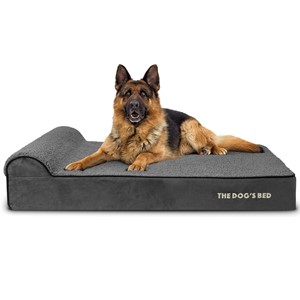
The Dogs Bed XL Grey Orthopedic Rectangle Bed
Price At Time of Publish $130.00 $185.00

KOPEKS Jumbo Orthopedic Rectangular Bed
Price At Time of Publish $130.00 $110.00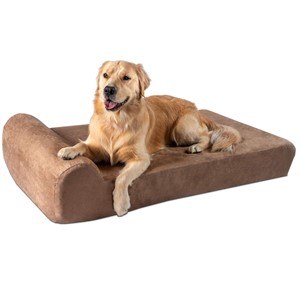
Big Barker XL Orthopedic Rectangle Bed
Price At Time of Publish $130.00 $240.00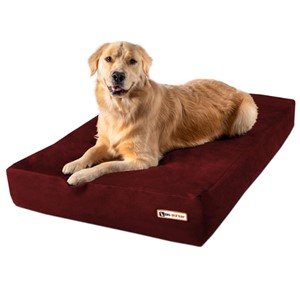
Big Barker XL Burgundy Orthopedic Rectangle Bed
Price At Time of Publish $130.00 $200.00

Serta XL Brown Orthopedic Rectangle Bed
Price At Time of Publish $130.00 $80.00
DogBed4Less XL Blue Orthopedic Rectangle Bed
Price At Time of Publish $130.00 $80.00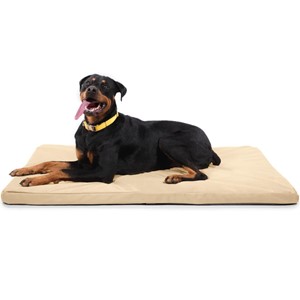
K9 Ballistics XL Sandstone Orthopedic Crate Pad
Price At Time of Publish $130.00 $159.00
Shop Bolster Dog Beds

Brindle XL Gray Orthopedic Bolster Bed
Price At Time of Publish $130.00 $79.00
Bedsure XL Blue Orthopedic Bolster Bed
Price At Time of Publish $130.00 $76.00
Bedsure XL Grey Orthopedic Bolster Bed
Price At Time of Publish $130.00 $60.00
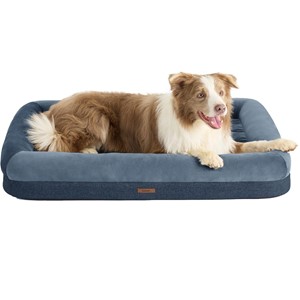
Lesure XL Navy Orthopedic Bolster Bed
Price At Time of Publish $130.00 $40.00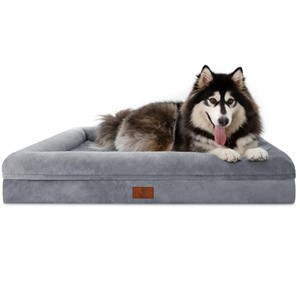
Yiruka XL Grey Orthopedic Bolster Bed
Price At Time of Publish $130.00 $55.00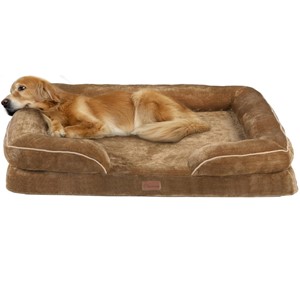
Yitahome XL Brown Orthopedic Bolster Bed
Price At Time of Publish $130.00 $37.00
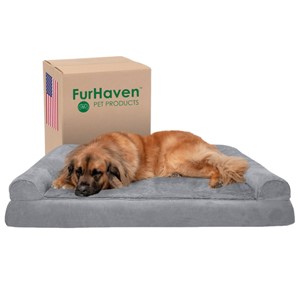
Furhaven XL Gray Orthopedic Bolster Bed
Price At Time of Publish $130.00 $130.00
PetFusion XL Grey Orthopedic Bolster Bed
Price At Time of Publish $130.00 $60.00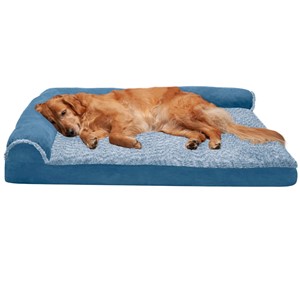
Furhaven Jumbo Blue Orthopedic Bolster Bed
Price At Time of Publish $130.00 $60.00
Shop Elevated Dog Beds
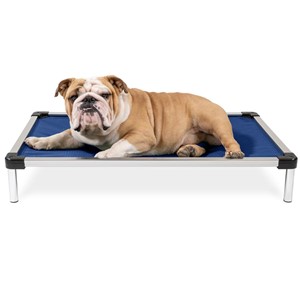
K9 Ballistics Chew Proof Elevated Small Bed
Price At Time of Publish $130.00 $129.00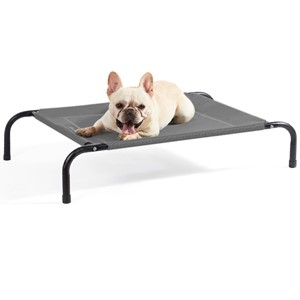
Bedsure Medium Elevated Dog Bed
Price At Time of Publish $130.00 $33.00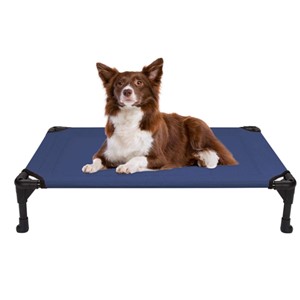
Veehoo Medium Elevated Dog Bed
Price At Time of Publish $130.00 $45.00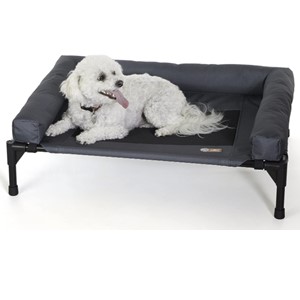
K&H Pet Products Elevated Bolster Dog Bed
Price At Time of Publish $130.00 $57.00
Kuranda Elevated Chew Proof Small Dog Bed
Price At Time of Publish $130.00 $134.00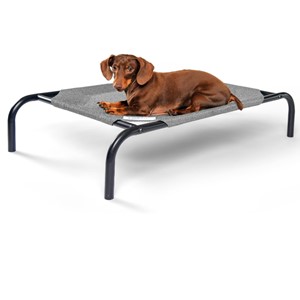
Coolaroo Small Elevated Dog Bed
Price At Time of Publish $130.00 $21.00
Related Articles
Below are some other articles you may be interested in reading. Just select on the topic of interest to learn more about it.
- Best Healthy Dog Food Brands
- Christmas Presents for My Dog
- Crates for Dogs
- Critical Signs Your Dog Needs Help
- Dog Training Techniques
- How To Train a Puppy
- Positive Reinforcement for Dog Training
- Puppy Proofing Your House
- Training Dog with Treats
- Using Alexa for Dog Behaviors
Go back to the Dog Luxury Beds home page.

